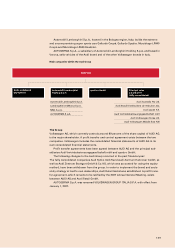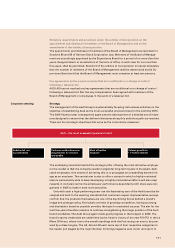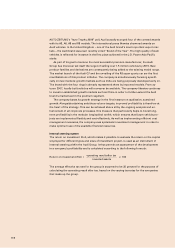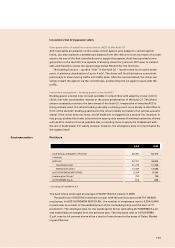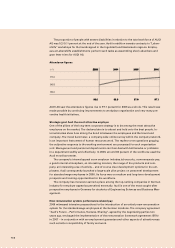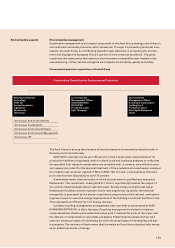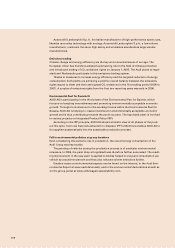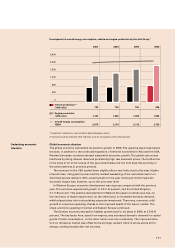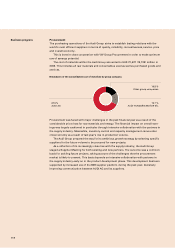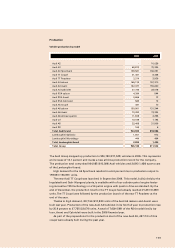Audi 2006 Annual Report Download - page 139
Download and view the complete annual report
Please find page 139 of the 2006 Audi annual report below. You can navigate through the pages in the report by either clicking on the pages listed below, or by using the keyword search tool below to find specific information within the annual report.
1 3 7
Key aspects of the ERA project are the reassessment of all activities within the company,
the emphasis placed on the performance component of pay and the abandonment of the
traditional distinction between blue-collar workers and white-collar staff. This offers better
development prospects for many employees. At the start of 2007, the Audi workforce of
around 45,000 at the two German plants will be allocated to the collectively negotiated pay
groups. ERA also creates greater transparency for the employees themselves: their pay is
broken down into a basic, a performance-related and (for certain production activities) a
physical strain component. There is in addition a so-called Audi component for all employ-
ees, above the blanket pay level.
Internationalisation
Around two out of three new Audi cars are sold outside Germany, with the tendency rising.
Anyone wishing to serve the needs of customers in another country has to know the people
and their customs. International personnel assignments have therefore become much more
widespread at Audi over the past few years. Whereas just under 100 employees were as-
signed to international locations in 1996, the total in 2006 was over 500. The main destina-
tions for those sent on assignments were Hungary, the USA, China, Spain and Italy. Audi
employees are also being deployed in other up-and-coming markets such as Dubai and
South Korea. The nascent premium market in India will be added in the current year.
Foreign assignments are an important element in the professional and personal devel-
opment of many Audi employees. From the company’s viewpoint, employees on an interna-
tional assignment are ambassadors of the brand. They also acquire international skills as
well as cultural and market-specific knowledge that help the company to focus even more
accurately on its export markets’ requirements.
Training at Audi
AUDI AG employed a total of 2,231 (2,236) apprentices at the end of 2006. Of this total, 2,053
(2,061) were engaged in industrial activities and 178 (175) in the technical/clerical area. 694
young people started their training at the German locations in September 2006, in a total of
20 different vocations. These include the new vocation of “Technical Product Designer”,
which supplies the virtual basics for reconciling the diverging wishes of design studio, tech-
nology and workshop.
Audi has developed a special programme to ease the transition from vocational training
to the world of work: the personnel hub. On the one hand, it serves to broaden the specialist
and personal horizons of young employees at Audi, and, on the other hand, it enables the
company to respond flexibly to variations in the number of workers needed at its individual
locations. Employees are able to broaden their skills and talents at other group locations or
at external companies, for instance suppliers, for a period of up to 24 months. An additional
qualification that is specific to the job and company process is moreover acquired over the
two-year hub period.
As in the past, Audi offers the prospect of attractive, secure employment to young people
who have completed their training at the company. The hub concept promotes the devel-
opment of skills, mobility and flexibility among young adults. Around 850 Audi employees
participated in the personnel hub in 2006.




